Fitting Instructions
The horse’s bone is strong above the Nasal notch, becoming more fragile towards the muzzle.
Place the noseband
above the Nasal Notch
Locate the Nasal Notch by running your thumb and finger down each side of the top of the nose until you feel it get deeper and softer.
The nasal passages come together above this point into the broad, strong bone of the head.
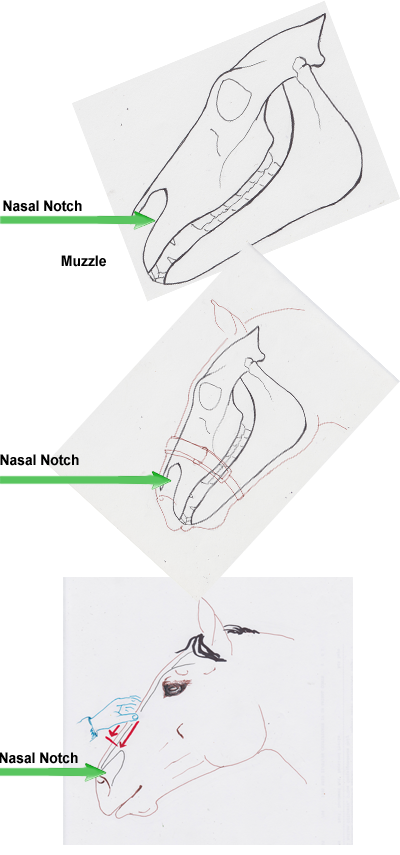
If the horse’s head is long enough, a two finger thickness between the Noseband and the point of the cheek will avoid discomfort from the noseband pressing on this point.
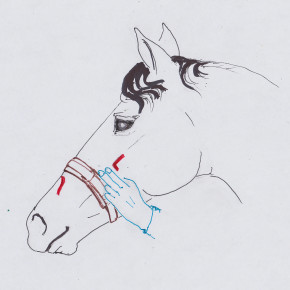
Threading the Elastic Jaw Strap onto the Noseband
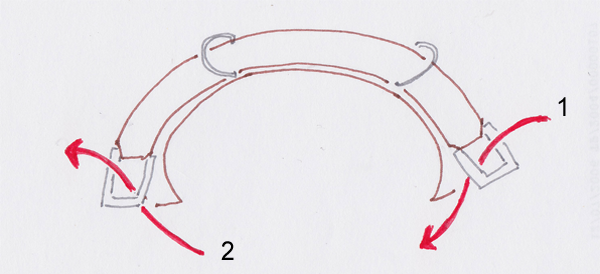
Pass leather tab end through either metal square
first from the outside (1), then from the underside (2)
Fastening the Jaw Strap
Fasten the Jaw Strap enough to stop the noseband sliding but not so tight as to stretch the elastic.
- You may find the elastic strap will fit comfortably placed against the horse’s jaw and threaded through both squares.
OR
- You may have the leather part through one square and elastic through the other.
It would be good to thread it in reverse occasionally, so that the elastic is on the other square.
After you remove the Gydle:
You may like to re-buckle the Elastic Jaw Strap so as not to lose it.
Placing the Gydle on the Horse
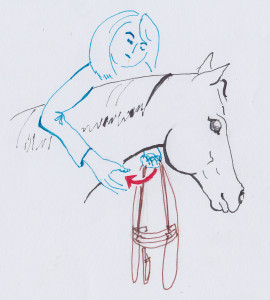
From the near side:
- Hold the Gydle with your left hand
- Place your right hand over the neck
- Pass the Gydle under the horse’s neck to your right hand
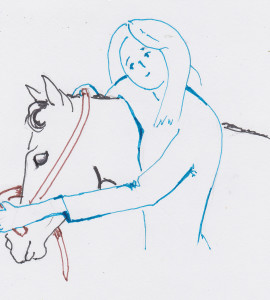
- Use your left hand to lift the noseband onto the horse’s head, being careful not to bump the horse’s right eye.
Note:
You may help your horse realise it is free to move and open its jaws by feeding it a treat or allowing it to graze awhile.